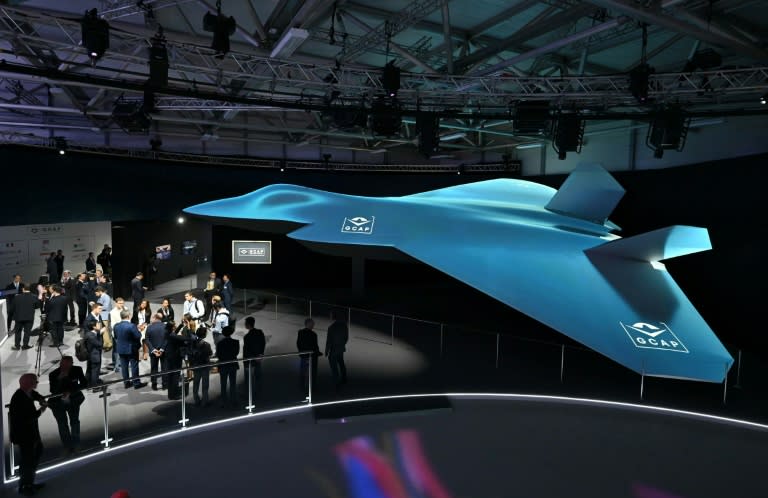The Global Combat Air Programme (GCAP), a collaborative initiative between the UK, Japan, and Italy aimed at developing a next-generation fighter jet, is advancing at a remarkable pace. The project aims to position itself against a similar endeavor by France, Germany, and Spain.
At the Farnborough Airshow currently taking place in the UK, the leading companies of the partnership—BAE Systems from the UK, Mitsubishi Heavy Industries from Japan, and Leonardo from Italy—unveiled a full-scale model of the future fighter jet. This new aircraft features a distinctive double V-tail design and is significantly larger than Japan’s F-2 and the Eurofighter, which it is set to replace.
The GCAP program encompasses not only the fighter jet but also a connected drone system working in tandem with other military resources. The aircraft is expected to enter service by 2035.
Herman Claesen, the program director at BAE Systems, expressed strong enthusiasm during a recent press conference, highlighting the tremendous momentum and energy behind the initiative from both government and industry stakeholders. In 2025, the three nations plan to enter the actual development phase, mobilizing billions of euros in investment, shared equally among them.
However, the newly elected Labour government in the UK is currently reviewing its defense agenda, which could potentially impact the future of the GCAP. Prime Minister Keir Starmer, who attended the Farnborough event, underscored the program’s critical importance for the UK.
Guglielmo Maviglia, head of the GCAP project at Leonardo, noted its strategic significance for Italy. If the GCAP timeline aligns as projected, the program is expected to be operational at least five years ahead of the competing Future Combat Air System (SCAF) initiative led by France, Germany, and Spain, which aims to replace existing fighters like the Eurofighter Typhoon and Dassault Rafale.
The flight demonstrator, a pre-prototype designed for testing the aircraft, is scheduled to take its first flight in 2027, two years sooner than SCAF’s timeline.
Mike Schoellhorn, CEO of Airbus Defence and Space, which is collaborating with Dassault Aviation on the SCAF project, stated that having two sixth-generation fighter programs in Europe is impractical.
In the US, which allocates five times more funding towards defense than all European countries combined, there are concerns regarding its Next Generation Air Dominance (NGAD) program, largely due to budgetary constraints.
Currently, there has been no convergence between the rival European programs, and Schoellhorn indicated that any movement towards cooperation would rely on the willingness of the respective governments.
He also suggested that both programs could collaborate in areas like armaments, with European missile manufacturer MBDA involved in both projects, as well as in companion drones and information systems collectively known as the “combat cloud.”
This dynamic landscape of military aviation innovation presents both opportunities and challenges as Europe navigates its future defense capabilities.
Image and News Source: https://es-us.finanzas.yahoo.com/noticias/reino-unido-jap%C3%B3n-italia-siguen-095727188.html



